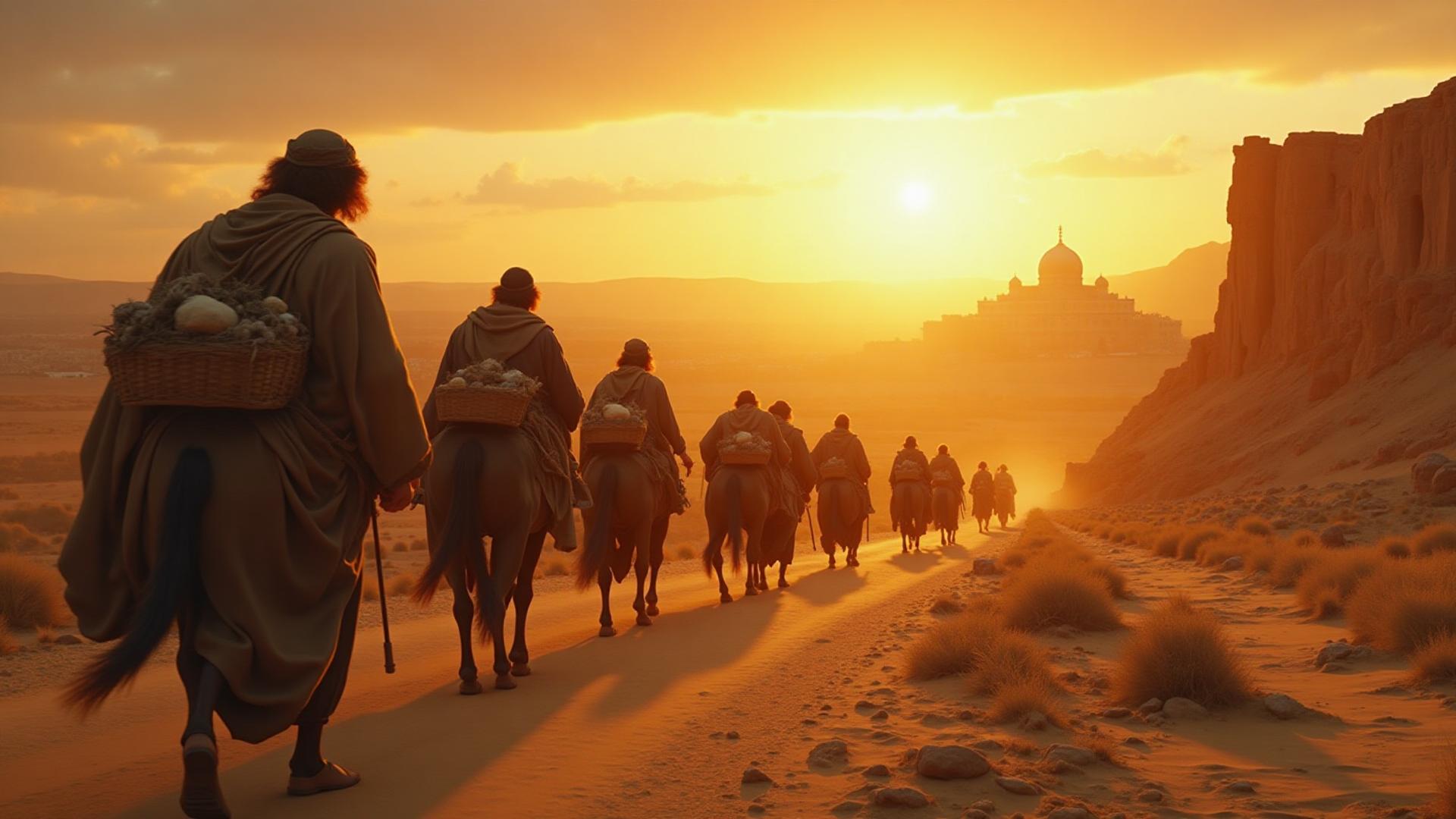Explore the remarkable journey of nearly 50,000 Jews who chose to leave the comfort of Babylon to rebuild Jerusalem, and discover the lessons their faith and sacrifice teach us today.
The Pilgrimage Home: A Census of Hope
Chapter 2 of Ezra provides us with what might seem like a tedious list of names and numbers, but this census represents something far more significant - it's a record of faith, courage, and divine faithfulness as God's people return to the Promised Land after 70 years of exile.
The Significance of the Census
"Now these are the children of the province that went up out of the captivity, of those which had been carried away, whom Nebuchadnezzar the king of Babylon had carried away unto Babylon, and came again unto Jerusalem and Judah, every one unto his city" (Ezra 2:1).
This wasn't merely an administrative record. Each name represents:
The Leadership
Zerubbabel the Governor
Leading this first wave of returnees was Zerubbabel, whose very name means "Descended of Babylon." Most likely born in captivity, he chose to lead his people back to a homeland he had never seen. According to Haggai 1:1, Zerubbabel served as governor of Judah and was instrumental in:
Jeshua the High Priest
Alongside Zerubbabel stood Jeshua, the high priest who would play a crucial role in restoring proper worship. The pairing of these two leaders - one political, one spiritual - demonstrates the comprehensive nature of Israel's restoration.
The People's Response
The census reveals fascinating details about those who chose to return:
Diversity of Participation
Total Numbers
The final count was remarkable:
Challenges of Return
Lost Genealogies
Not everyone could prove their Israelite heritage. Two groups totaling 652 people (verses 59-63) had lost their genealogical records. This created particular problems for those claiming priestly lineage, as precise ancestry was essential for temple service.
The Tirshatha (governor) wisely decreed that these individuals could not serve as priests until the matter could be resolved through the Urim and Thummim - demonstrating the importance of maintaining biblical standards even in times of restoration.
The 4-Month Journey
The return wasn't easy. The 900-mile journey from Babylon to Jerusalem took approximately four months through challenging terrain. Yet these families willingly undertook this arduous trip, bringing their possessions, livestock, and hopes for the future.
Immediate Priorities
Upon arrival, the people's first actions revealed their hearts:
Generous Giving
"They gave after their ability unto the treasure of the work threescore and one thousand drams of gold, and five thousand pound of silver, and one hundred priests' garments" (Ezra 2:69).
Before addressing their own needs, they contributed generously to rebuild God's house. This sacrificial giving demonstrates that their hearts were truly committed to restoration.
Settling in Their Cities
"So the priests, and the Levites, and some of the people, and the singers, and the porters, and the Nethinims, dwelt in their cities, and all Israel in their cities" (Ezra 2:70).
Rather than clustering together for security, they courageously spread out to reclaim and rebuild their ancestral cities throughout Judah.
Lessons for Today
This census teaches us several important principles:
1. Not Everyone Will Choose Restoration
Many Jews remained in Babylon, preferring the security of the familiar to the uncertainty of God's calling. Similarly, not every believer will choose the challenges of spiritual growth and service.
2. God Uses Ordinary People
The lists include farmers, craftsmen, and common citizens alongside priests and leaders. God's work requires all kinds of people with various skills and backgrounds.
3. Sacrifice Precedes Blessing
These returnees gave up comfort and security to participate in God's purposes. Meaningful service often requires significant sacrifice.
4. Community Matters
The restoration wasn't individual but communal. They traveled together, worked together, and settled together while maintaining their distinct roles and responsibilities.
A Prophetic Picture
This return from Babylon foreshadows the ultimate restoration when God will gather His people from all nations. Just as these faithful Jews left Babylon to rebuild Jerusalem, believers today are called to live as citizens of heaven while working to build God's kingdom on earth.
The census of Ezra 2 reminds us that God knows each of His people by name and that every person willing to participate in His work - whether priest or porter, singer or servant - has a vital role in His eternal purposes.
*This study continues our exploration of the Book of Ezra, examining how God's faithfulness extends to every detail of His people's restoration.*

